 4 Columns
4 Columns
4Columns returns with a new issue on September 3. For now, deluged by New York City’s flooding rains, but still longing for the sea, we dive into a hydropoetic review of our archives.
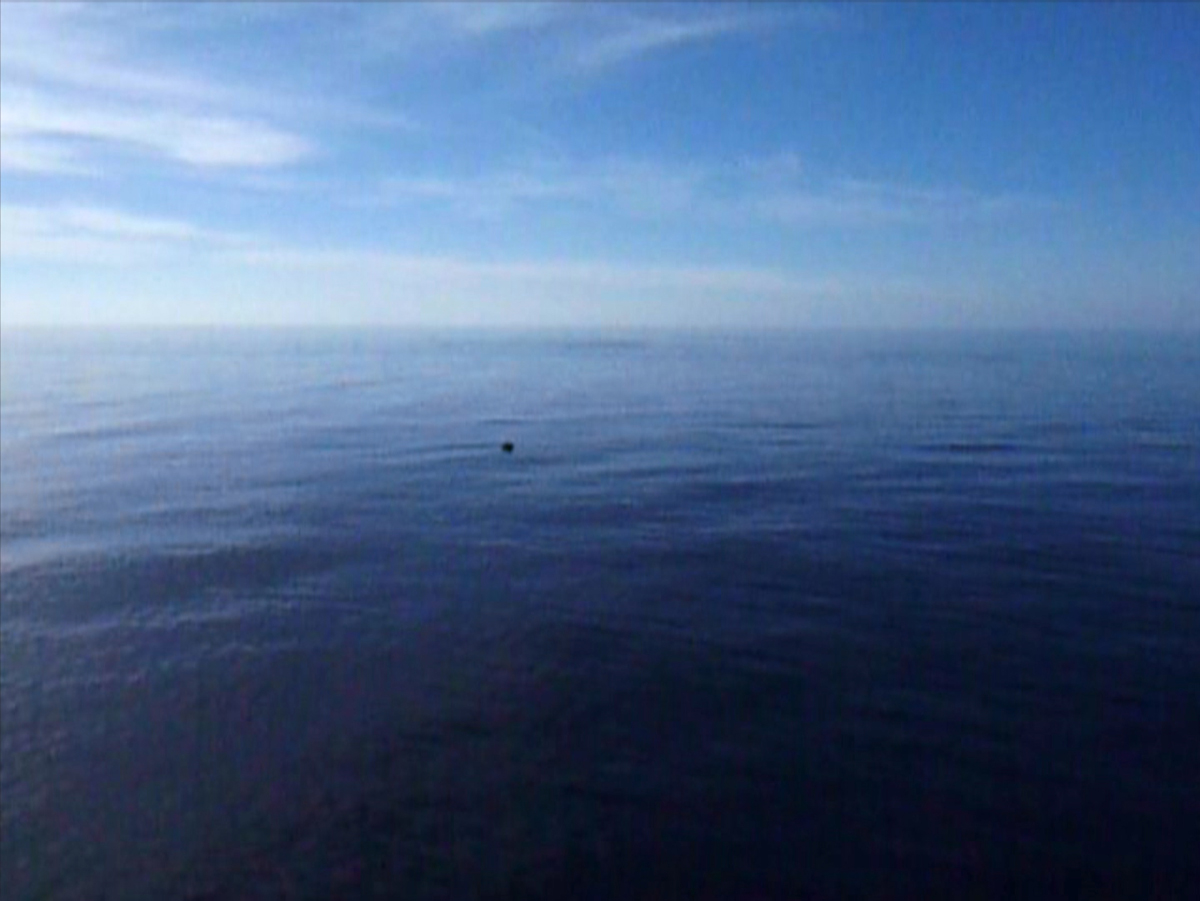
Havarie. Courtesy pong Film GmbH.
“The water, like a witch’s oils, / Burnt green, and blue and white.” In Coleridge’s eternal, aqueous poem, water is everywhere yet nowhere, alluring yet deadly, terrifyingly mutable. Here and throughout the history of art, water can be lustral, corrosive, banefully fickle, life-giving, godly: more precious than food or shelter, water fascinates us, irresistibly drags our gaze toward it. (If a human looks at so much as an image of the sea, their brain waves measurably change.) The sea, the ocean, the thousand-armed river: these liquid bodies are an overwhelming sublime, a bottomless deep of imagination; they make possible the idea of mermaids.
“In civilizations without boats, dreams dry up, espionage takes the place of adventure, and the police take the place of pirates,” wrote Foucault. Water is rapidly disappearing in many places—the ocean itself is in flames (“The charmèd water burnt away / A still and awful red”). But a survey of 4Columns’ sluiced archives reveals myriad liquid fantasies; it seems our dreams, at least for now, are as damp and humid as ever. Let us take to the lunatic seas that remain, then, and leave at bay the thirsty police that would desiccate our imaginations.
• • •
THE WATER IS DELIRIOUS
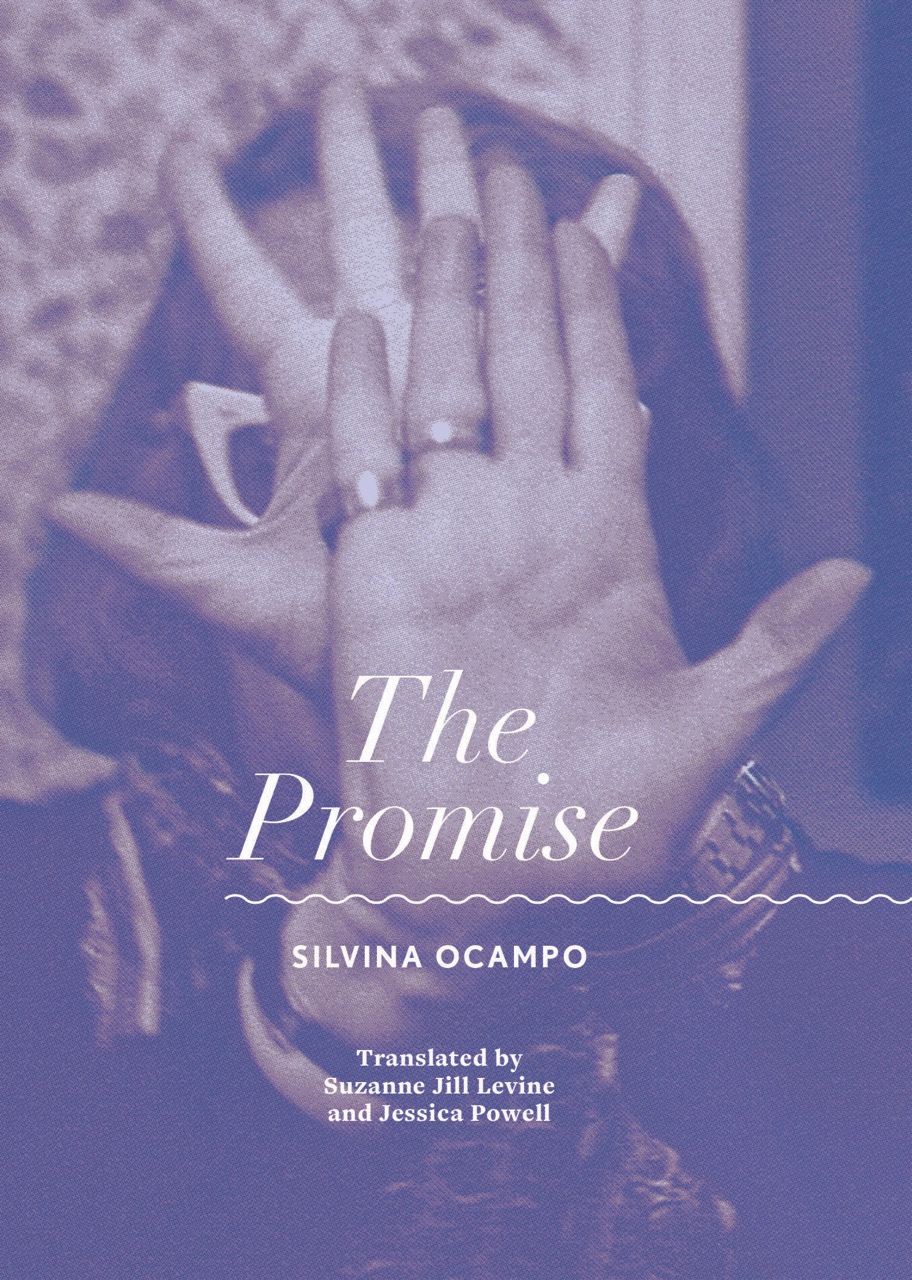
Foucault was mesmerized by the twinning of water with madness, a centuries-long collocation in the European tradition, in which water was a symbol and site of derangement, a cause for it, a cure for it, and much else besides. Modernist Argentine writer Silvina Ocampo’s clairvoyant, elegantly unnerving The Promise (her sole novel, left definitively unfinished at her death in 1993, and published by City Lights in English translation in 2019) is, in a Foucauldian vein, an oceanic delusion. The book’s nameless narrator has fallen off an ocean liner into the briny depths, “unnoticed by passengers or crew,” writes Brian Dillon in his review. What follows is a “dreamed, impossible volume . . . composed of the woman’s thoughts as she floats alone. . . . A sort of horrified lyricism keeps returning in The Promise, as the narrator is pulled back from the sea of memory to her present in the ocean. It rains on the water, fish swim around her, she wonders what else is living in the fathoms below, waiting. Her body and personality begin to dissolve into the Atlantic. She hallucinates trees, gardens, animals, a raft laden with fruit. ‘These long days remind me of the city. Could the water, or coexistence with the water, be so similar to the rest of life?’ ”
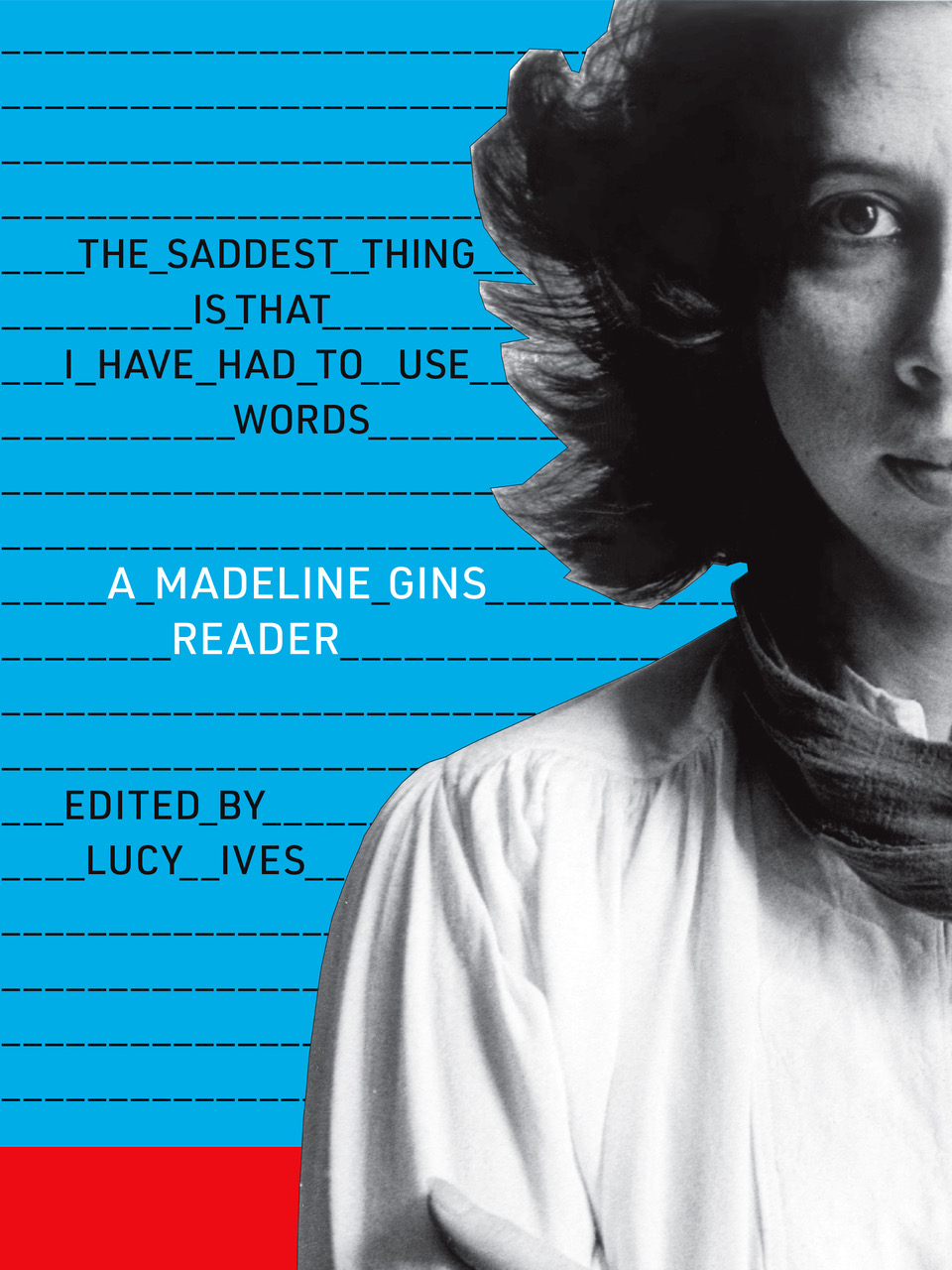
At some point in recent history, though, lunacy began to lose its watery parentage, Foucault also pointed out, as madness became linked instead with gasses (the carbon-dioxic exhalations and oxygenated gasps of talk therapy; the coiled tendrils of smoke pluming from an opium pipe). There is such a vaporous madness in the poetry of Madeline Gins, a new collection of which, edited by Lucy Ives, was reviewed by Quinn Latimer last year. In this rich tome, Latimer was particularly compelled by Gins’s WORD RAIN, which the critic describes as “a kind of philosophy of breathing, of air,” a theory of language as mist, water in its gaseous state. Gins writes in the poem: “Words are water soluble. This is clearly and moistly so.” Latimer read the book during the deranged first phase of the COVID-19 lockdowns, in Greece, while it was raining: “What I mean to say (to write) is this: I was inside, in quarantine—we all were, the whole street, the whole city, perhaps the whole continent—and it was raining. I was reading. ‘The gas mask reads in the mist,’ Gins offered. How odd to encounter such lines now, when the wetness of words, their aftermath, must be avoided (for we are not immune).”
• • •
THE WATER IS CONTAMINATED
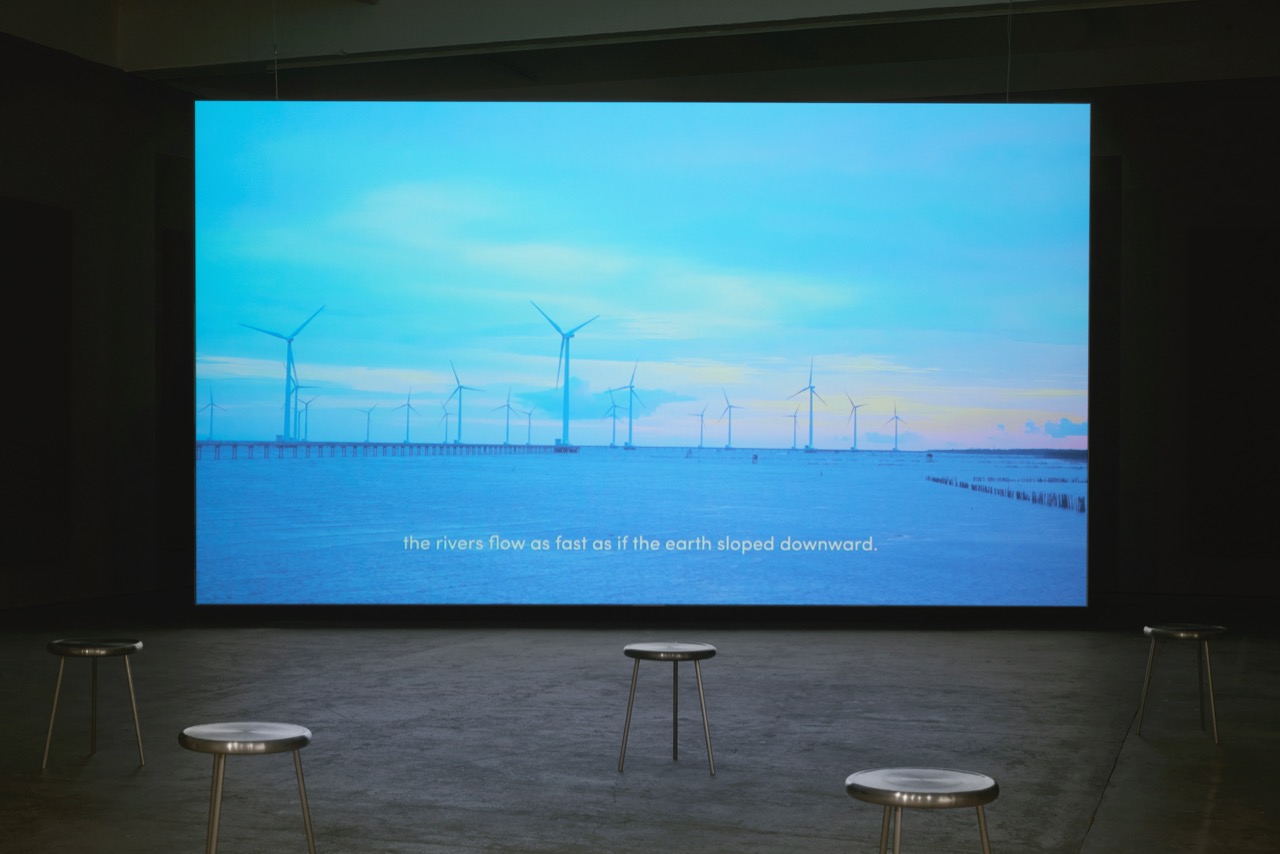
Thao Nguyen Phan, Becoming Alluvium, 2019, installation view. Image courtesy Chisenhale Gallery and the artist. Photo: Andy Keate.
Polluted water, vengeful water, is the main character in a recent exhibition by Vietnamese artist Thao Nguyen Phan at London’s Chisenhale Gallery, reviewed by Emily LaBarge. The exhibition was a “quiet paean,” LaBarge writes, to “the Mekong Delta, whose seven branching waterways have for decades been disrupted by invasive and sometimes disastrous damming.” In Phan’s video work, the frustrated water erupts, bursting a dam, disappearing villages in its wake and killing two brothers, who are reincarnated as a dolphin and a water lily, flowing through the river. As the piece progresses, the voice of Marguerite Duras is heard telling of the rivers of her youth; a princess gathers morning dew to make a limpid necklace. Despite the backdrop of environmental catastrophe, a certain brightness glimmers.
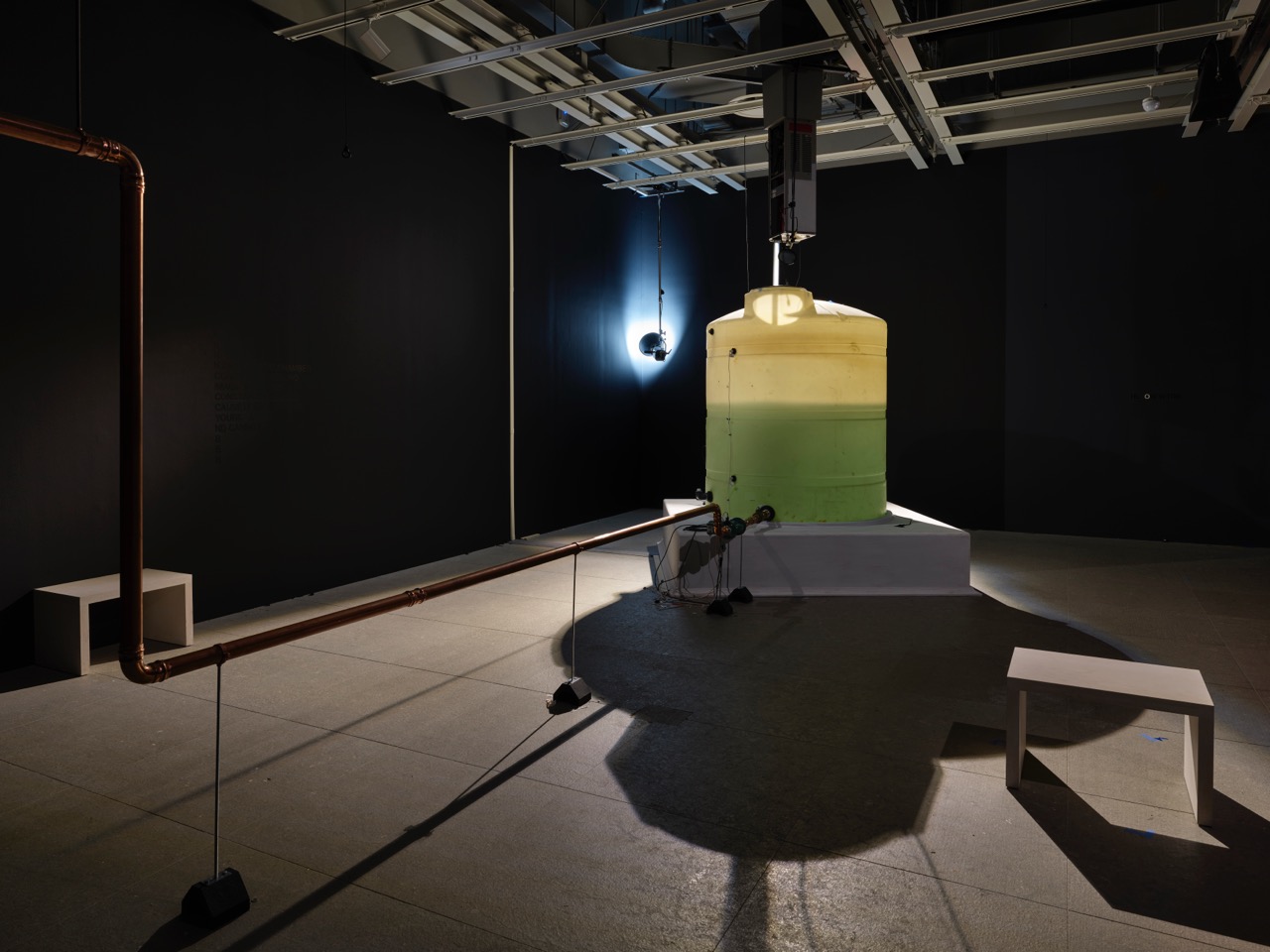
Pope.L, Choir, 2019, installation view. © Pope.L. Photo: Ron Amstutz.
Contaminated water coursed through Pope.L’s 2019 retrospective Instigation, Aspiration, Perspiration, reviewed by James Hannaham. Here, the deadly water in question pours through the performance artist’s Choir, an “upside-down drinking fountain [gushing] water into a thousand-gallon tank that flows to a system of copper pipes,” Hannaham explains. “The artist [associates] this weird machine to environmental justice, teasing out its resonance with the Flint, Michigan, crisis. Pope.L also bottled contaminated Flint water and sold it as art to raise money for the affected communities.” Like Phan’s work, though, the water’s danger is not the work’s only valence. A certain beauty manages to persist, writes Hannaham: “But even after one knows the piece’s upsetting genesis, the environment is truly odd. You want to spend time there watching the tank fill, waiting for the water to drain . . .”
• • •
THE WATER IS PRISON—THE WATER IS ESCAPE
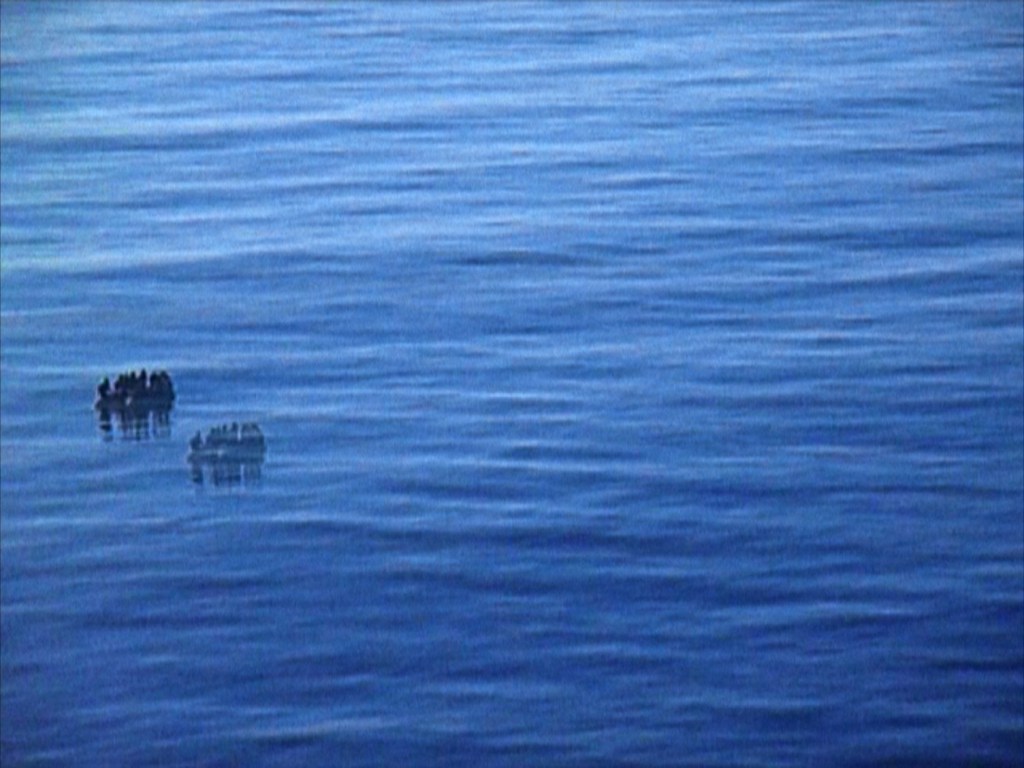
Havarie. Courtesy pong Film GmbH.
Water can cruelly burst dams, water can insidiously poison—and water can be a prison, trapping humans where they do not want to be, while simultaneously offering the fantasy of escape. Two recent film reviews touched on this paradox in their discussions of the ongoing migrant crisis. Philip Scheffner’s experimental documentary Havarie was slammed upon its 2016 premiere for its “mystification, arthouse commodification, a kind of trafficking” of the story of migrants trying to survive passage across the Mediterranean in a rubber dinghy, a journey that Scheffner relays through found cell phone footage. Film writer Olaf Möller denounced Havarie as “morally abject,” “about intentions and attitudes instead of engagement.” But our critic Sukhdev Sandhu calls the film’s self-conscious slowness “hydropoetic,” subversively deaccelerating; he finds its intense, monochromatic blueness affective, associative, full of emotion and “the possibility of imaginative resistance.” Sandhu writes: “Havarie bores, mystifies, invites us to lean in, makes us self-conscious about looking at—and consuming—images of migrants. That strikes me as engagement. That strikes me as political too.”
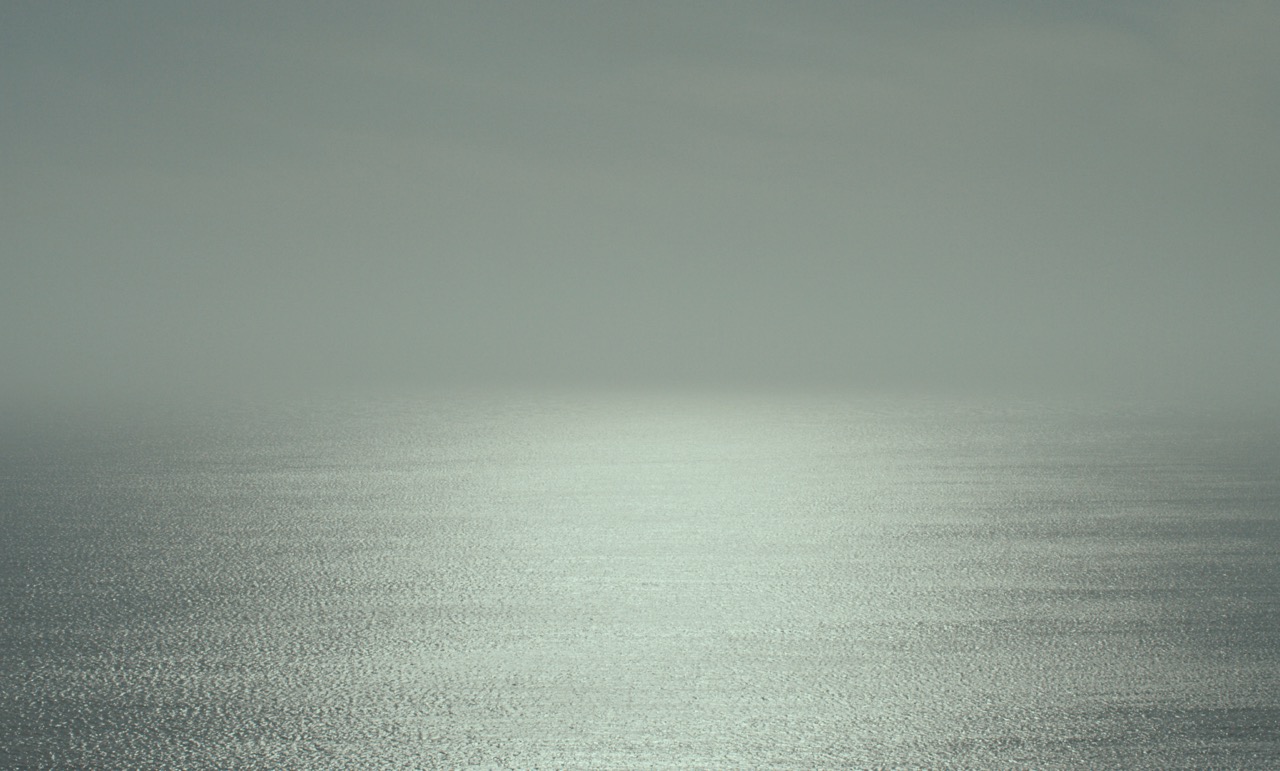
Atlantics. Courtesy Netflix.
Mati Diop’s evocative, expansive Atlantics (2019) also tells of a perilous, ultimately fatal sea passage, but in a remarkably different way. 4Columns film editor Melissa Anderson writes of this Senegal-set ghost story: “Diop’s film, her first feature, isn’t only one thing or beholden to a sole genre. Nested within this tale of the reanimated dead is a mythic romance and a coldly furious allegory about the migrant crisis.” Unlike Havarie, “Atlantics follows not those who leave but those who . . . have stayed behind”—the women who have watched their lovers desperately take to the sea in search of a far-away future on the other side, a future they would never reach. The sea they sail away on is a sea that “beckons, seduces, overwhelms, and destroys.”